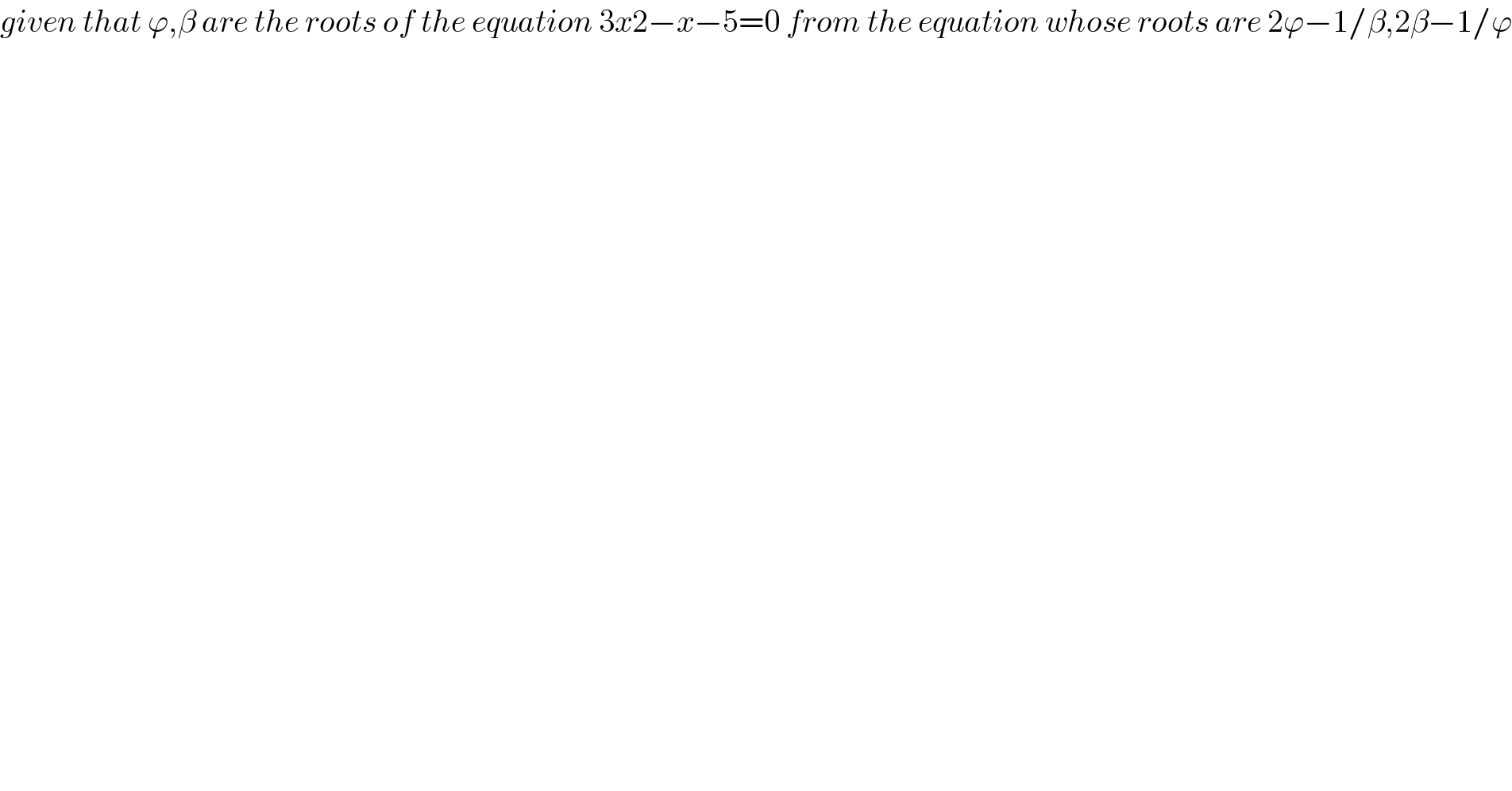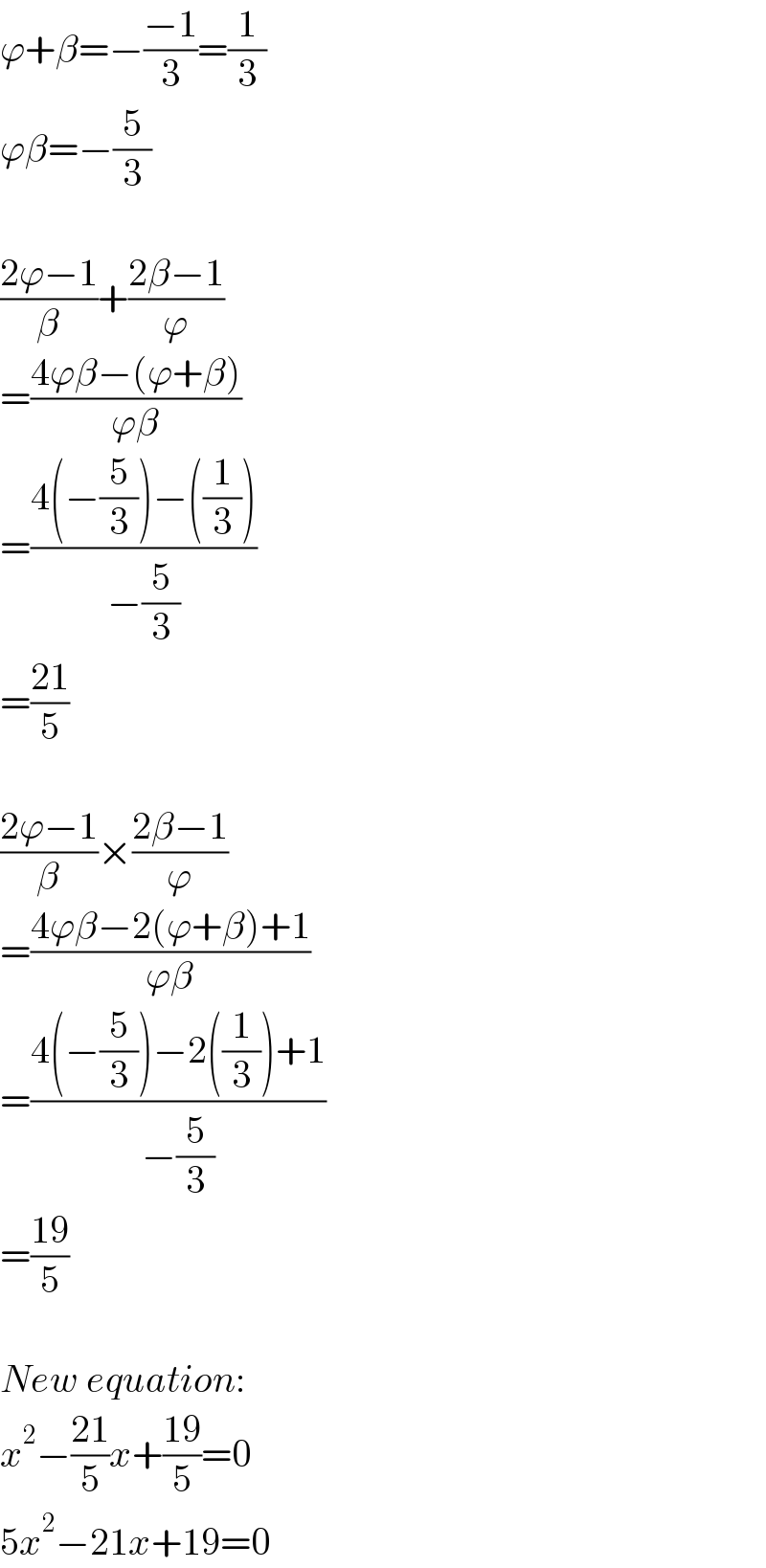
Question Number 216355 by jikansamu last updated on 05/Feb/25

$${given}\:{that}\:\varphi,\beta\:{are}\:{the}\:{roots}\:{of}\:{the}\:{equation}\:\mathrm{3}{x}\mathrm{2}−{x}−\mathrm{5}=\mathrm{0}\:{from}\:{the}\:{equation}\:{whose}\:{roots}\:{are}\:\mathrm{2}\varphi−\mathrm{1}/\beta,\mathrm{2}\beta−\mathrm{1}/\varphi \\ $$
Commented by AntonCWX last updated on 05/Feb/25

$${Please}\:{make}\:{sure}\:{to}\:{have}\:{your}\:{question}\:{typed}\:{neatly}\:{and}\:{in}\:{quality}. \\ $$
Answered by AntonCWX last updated on 05/Feb/25

$$\varphi+\beta=−\frac{−\mathrm{1}}{\mathrm{3}}=\frac{\mathrm{1}}{\mathrm{3}} \\ $$$$\varphi\beta=−\frac{\mathrm{5}}{\mathrm{3}} \\ $$$$ \\ $$$$\frac{\mathrm{2}\varphi−\mathrm{1}}{\beta}+\frac{\mathrm{2}\beta−\mathrm{1}}{\varphi} \\ $$$$=\frac{\mathrm{4}\varphi\beta−\left(\varphi+\beta\right)}{\varphi\beta} \\ $$$$=\frac{\mathrm{4}\left(−\frac{\mathrm{5}}{\mathrm{3}}\right)−\left(\frac{\mathrm{1}}{\mathrm{3}}\right)}{−\frac{\mathrm{5}}{\mathrm{3}}} \\ $$$$=\frac{\mathrm{21}}{\mathrm{5}} \\ $$$$ \\ $$$$\frac{\mathrm{2}\varphi−\mathrm{1}}{\beta}×\frac{\mathrm{2}\beta−\mathrm{1}}{\varphi} \\ $$$$=\frac{\mathrm{4}\varphi\beta−\mathrm{2}\left(\varphi+\beta\right)+\mathrm{1}}{\varphi\beta} \\ $$$$=\frac{\mathrm{4}\left(−\frac{\mathrm{5}}{\mathrm{3}}\right)−\mathrm{2}\left(\frac{\mathrm{1}}{\mathrm{3}}\right)+\mathrm{1}}{−\frac{\mathrm{5}}{\mathrm{3}}} \\ $$$$=\frac{\mathrm{19}}{\mathrm{5}} \\ $$$$ \\ $$$${New}\:{equation}: \\ $$$${x}^{\mathrm{2}} −\frac{\mathrm{21}}{\mathrm{5}}{x}+\frac{\mathrm{19}}{\mathrm{5}}=\mathrm{0} \\ $$$$\mathrm{5}{x}^{\mathrm{2}} −\mathrm{21}{x}+\mathrm{19}=\mathrm{0} \\ $$
